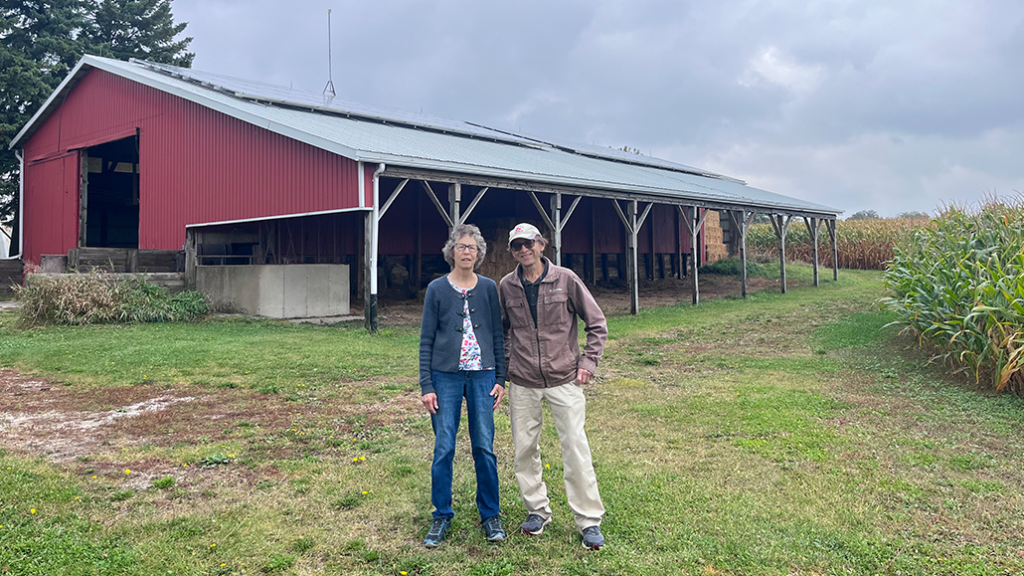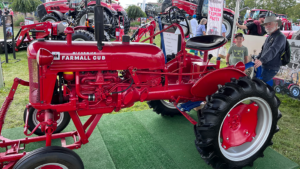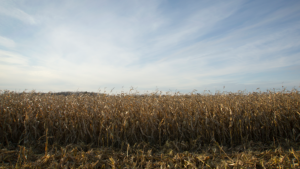The electric farm
WINTEROSE FARM IS SOLAR POWERED

DENNIS AND HELEN Martin of Winterose Farm near Winterbourne, Ontario, have gone all-in on solar power. Since 2010, they have been involved with three separate solar generation projects — two on their home farm and a third on their daughter’s nearby property.
First settled by the Martin family in 1944, Dennis and Helen started dairy farming in 1989, while brothers Keith and Quentin went on to start Cribit Seeds, which operates nearby. Helen and Dennis milked cows until 2010, when they sold the cows and quota. Today, they grow a rotation of corn, soybeans, and wheat, including pedigreed seed for Cribit.
Once the cows were gone, Dennis Martin says that they were looking for new opportunities. Looking at the recently announced Green Energy Act, enacted in 2009 by the provincial Liberal government, aimed at expanding renewable energy development, encouraging energy conservation, and creating green-sector jobs, the Martins saw an opportunity to invest.
“I was always interested in doing a solar power project,” says Martin. “We got in on the ground floor. We had a site for it — we didn’t have to remove any prime land; it fits into a former cow exercise lot.”
IN THE BEGINNING
The first project was a 10-kilowatt solar tracker that follows the sun as it moves across the sky. Like any new technology, there was a learning curve and a risk versus reward component. “This was leading edge, bleeding edge technology,” says Martin.
The risk part of the equation came into play when the original tracker system was damaged in a wind event. The panels themselves were not damaged, but a new tracker unit, better able to withstand wind, needed to be installed.
Overall, Martin says that the experience was a good one, and in 2016, they installed two 10-kilowatt panels on the southern-facing roof of a former heifer barn, now used as a shed. This project was set up as a net-metering project, where the farm uses the generated electricity first, and then the excess is supplied to the grid.
Most recently, the Martins have helped their daughter and son-in-law install a solar panel project on their property. They also have geothermal heating and cooling.
“They will probably never get a utility bill,” says Martin.
EXPECTATION VERSUS REALITY
Martin says that, at the time of installation, he was cautioned that there was an expectation that the panels would experience about a 1.5 per cent loss of output each year. Martin says that has not been their experience, with losses of only a fraction of that. He expects that his panels will last at least 30 to 40 years.
While solar panels function best on a clear, sunny summer day — Martin says they can generate 100 kilowatts of electricity in those conditions — they still perform even on grey, overcast, or snowy days. On a cloudy day in the fall, they can still produce 30 – 40 kilowatts of energy.
Snowy weather can also hamper efficiency, with only one inch of snow accumulation causing a significant drop. November and December, he says, are the worst-performing months, but by January, longer, sunnier days and brighter, warmer sun means production picks up again. Wildfire smoke from Northern Ontario and Quebec forest fires also affected 2023 production; he says he will know better once he looks at year-end data.
Another concern, says Martin, is how waste from decommissioned solar projects will be handled in the future. However, as the industry continues to grow and technology advances, he says that solar panel components’ recycling and recovery rate is expected to be relatively high. In Europe, in particular, there are now economies of scale in solar panel recycling that will mean high recovery rates of solar power components.
ALL-IN ON ELECTRIC
The Martins have gone all-in on electric. As early adopters of electric-powered vehicles, they had an early-edition Chevy Volt plug-in hybrid. In 2019, they invested in the all-electric Chevy Bolt. Martin says he does not have range anxiety: “We can go to London and back again, and back to London, without having to worry about recharging,” he says.
In addition to their electric car, the Martins have an electric lawn mower and several small electric tools, including weed trimmers and chainsaws.
Martin believes there is a lot of opportunity to grow solar-powered production in Ontario, and farmers should consider investigating the opportunity. Not only is there a potential return on investment, but also a chance to make an environmental impact and contribute to reducing reliance on fossil fuels.
Many farmers, he says, have infrastructure in place to install solar panels, like barn and shop roofs, without taking valuable farmland out of production.
BUR OAK TRAIL
Solar farming was not the only new enterprise that the Martins took on after selling their cows; with more time, Martin says he took a renewed interest in his woodlot.
“I hadn’t been back there in 40 years,” he says. “I was amazed at the diversity I found.”
Martin has been working on an ash replacement strategy in the woodlot, replacing the downed trees with Black Maples.
The Martins established the Bur Oak Trail, with a two-and-a-half-kilometre loop and 25 numbered and identified trees. The gem in the woodlot is Goliath, an estimated 280-year-old Bur Oak with a fifteen-foot circumference trunk. •



















